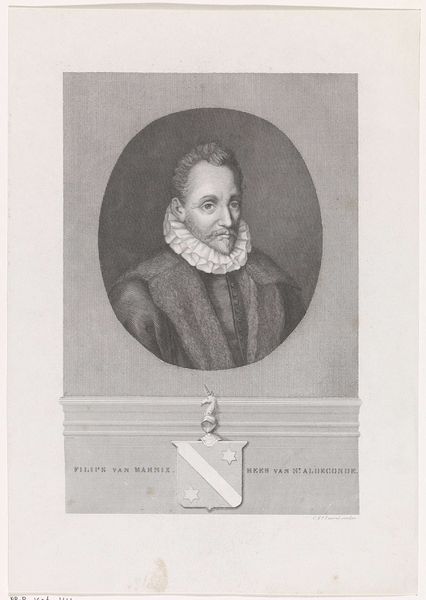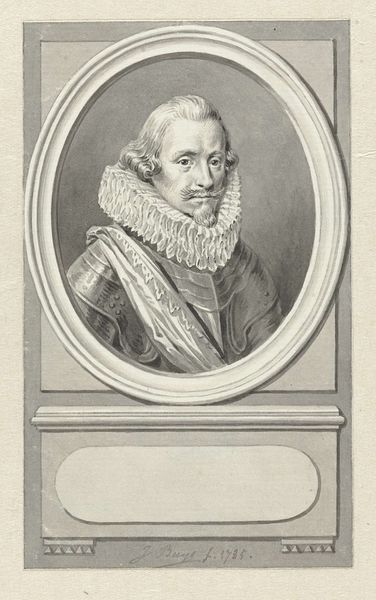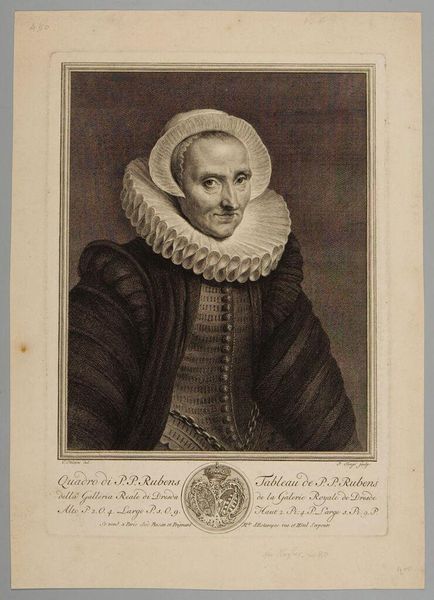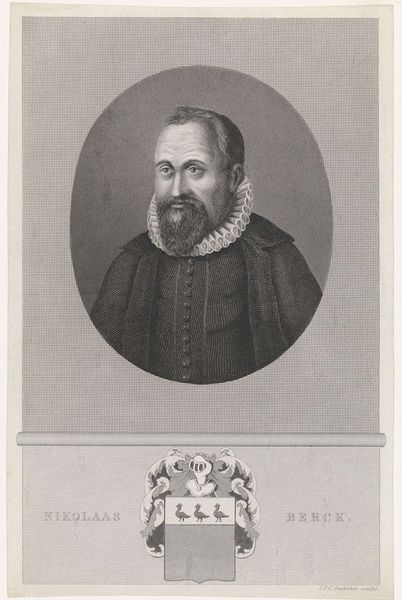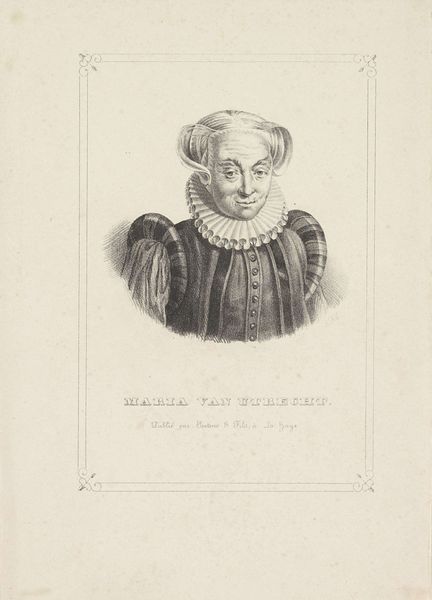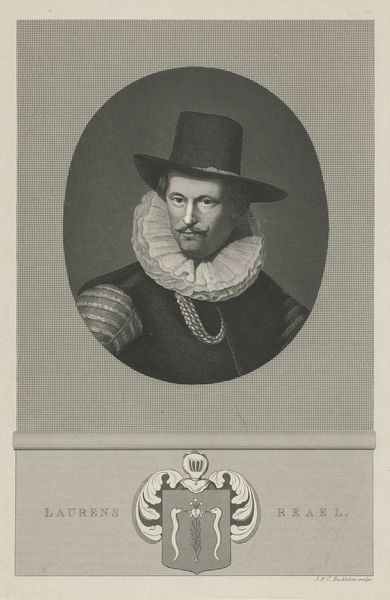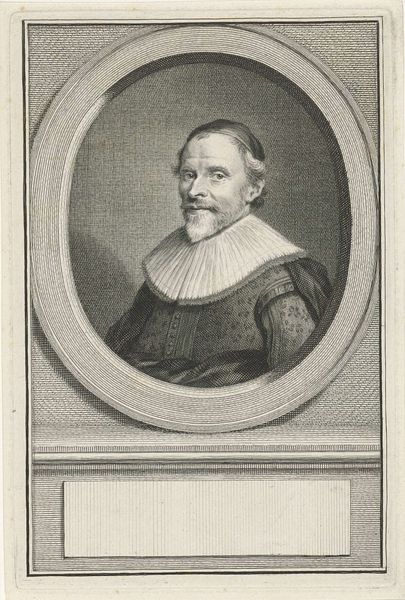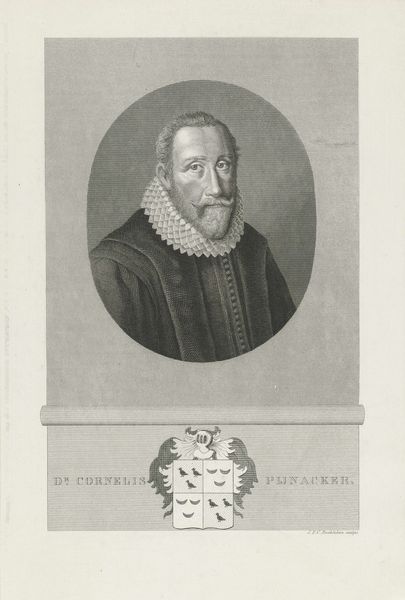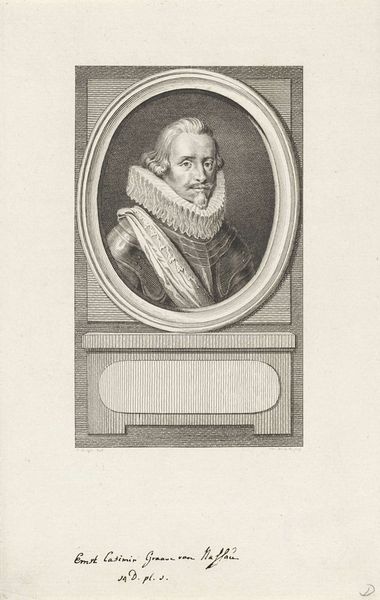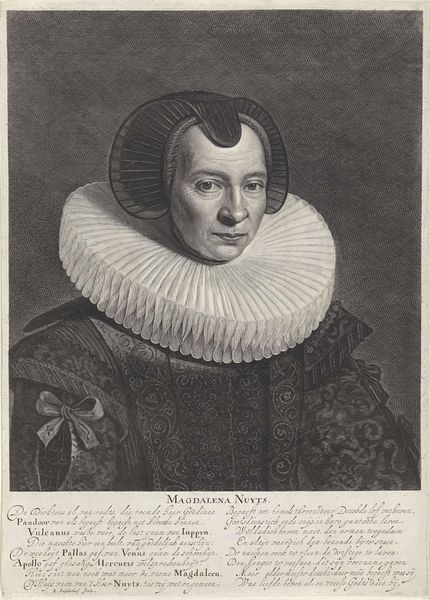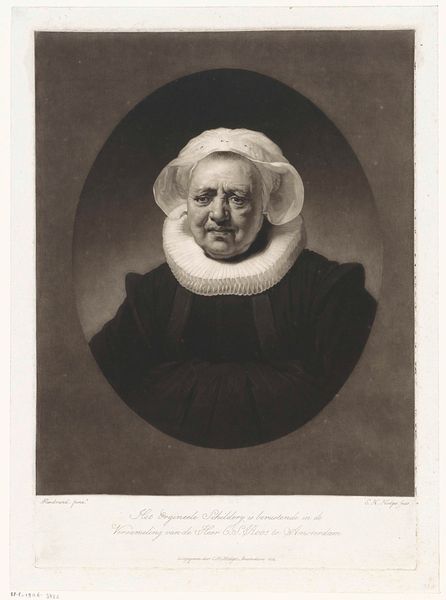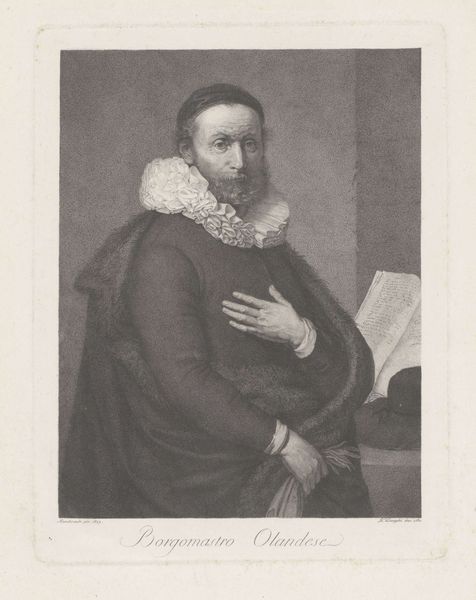
drawing, pencil, engraving
#
portrait
#
pencil drawn
#
drawing
#
pencil drawing
#
romanticism
#
pencil
#
engraving
#
realism
Dimensions: height 420 mm, width 287 mm
Copyright: Rijks Museum: Open Domain
Pieter Gerardus Bernhard made this portrait of Maria van Walenburch with graphite and lithography ink in 1855. Lithography is a printmaking process that relies on the contrast between greasy and water-receptive areas on a stone or metal plate. The artist draws an image with a greasy crayon, and then the stone is treated with acid. The act of creating this portrait of Maria van Walenburch becomes more accessible through lithography. Lithography democratizes art by making images more easily reproducible. This portrait itself, in its material execution, makes visible the shift in art production toward greater reproducibility. This contrasts with traditional artistic processes, where uniqueness and craftsmanship were primary values. This shift also reflects broader societal changes toward mass production and consumption, tying art to wider issues of labor and politics. The lithographic stone is essentially a matrix used to stamp out copies on an industrial scale. The lithographic technique embodies this spirit of production that has parallels to the Industrial Revolution itself.
Comments
No comments
Be the first to comment and join the conversation on the ultimate creative platform.
